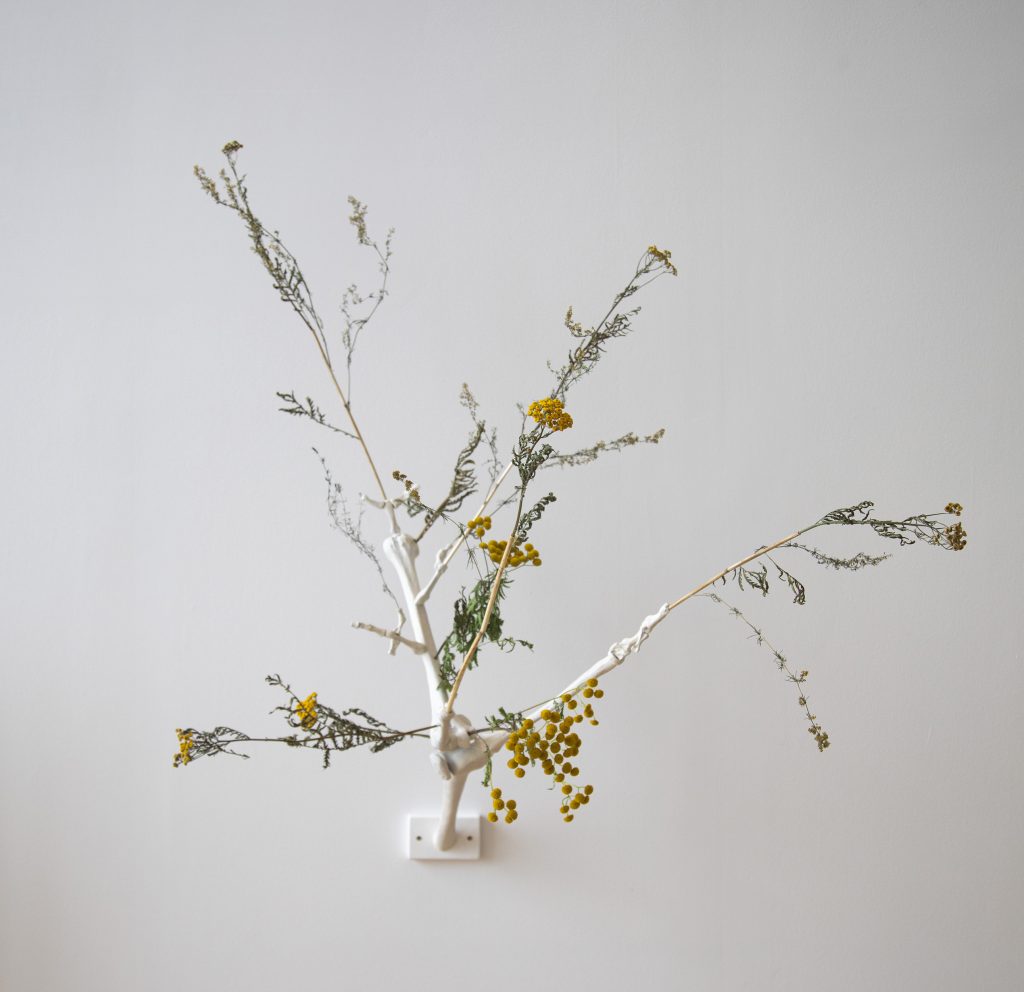The installation is composed of human bone replicas and dried flowers. In Finland, reed had been widely used as a cushion for grave coffins, and fragrant Lady’s bedstraw to cover the smell of dead bodies. Tansy was a common funeral flower for a long time.

Burial belongs to humanity. By doing so, we turn our limited temporality into the history. Even as, the tomb is a sign of the mortality of its author and the person buried in it. Burial is also an establishment. It marks a place; hic jacet… (here rests). The grave makes the place relevant to its creators, and belongs to the species-specific behavior of man. Other species do not work this way. The word ‘human’ and its derivatives come from the Latin word ‘humus’, which means earth or ground. With this in mind, people are the ones who bury.
It is gracious that our planet allows burial. For example, in the Moon or space, nothing rots, disappears, or changes into something else. If the Earth did not compost our bodies, we would be buried in the dead. The body must be disposed before it becomes truly dead, passed away. After that, photographs, burial sites and other memorabilia represent the deceased. What is left of the body becomes waste and later material for new life.


